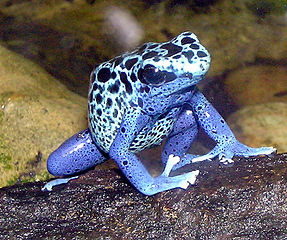Dear London Zoo: Have you Really Thought Through This Offsetting Thing?
There’s an odd notion doing the rounds that you can destroy an ecosystem and make a copy of it somewhere else if you fancy putting up a building or something. Sadly a good number of folks who should know better have bought it hook, line and sinker. One of the fish that’s got hooked on this line is the London Zoological Society, the power behind the world-famous London Zoo based in Regent’s Park in London. This June the Zoo will sponsor and host an international conference on biodiversity offsetting that claims to be “the first global conference on approaches to avoid, minimise, restore, and offset biodiversity loss.” In theory, if you make a very long list of every single thing—living and not—in an ecosystem, and then assign a notional price to each item on the list, you can tear it all down and go shopping somewhere else to replace it. On reflection, this is clearly nonsense. For starters, it’s a bit hard to decide what to put on your list. Ants? How many? How do you arrive at a hard count? How do you account for the ages of the ants in the population, or the roles they carry out, or the size of the colonies they live in what number of trees? How far away is their food from those colonies? The water? Is it a healthy population or not?

By Eve Mitchell
There’s an odd notion doing the rounds that you can destroy an ecosystem and make a copy of it somewhere else if you fancy putting up a building or something. Sadly a good number of folks who should know better have bought it hook, line and sinker.
One of the fish that’s got hooked on this line is the London Zoological Society, the power behind the world-famous London Zoo based in Regent’s Park in London. This June the Zoo will sponsor and host an international conference on biodiversity offsetting that claims to be “the first global conference on approaches to avoid, minimise, restore, and offset biodiversity loss.” In theory, if you make a very long list of every single thing—living and not—in an ecosystem, and then assign a notional price to each item on the list, you can tear it all down and go shopping somewhere else to replace it.
On reflection, this is clearly nonsense. For starters, it’s a bit hard to decide what to put on your list. Ants? How many? How do you arrive at a hard count? How do you account for the ages of the ants in the population, or the roles they carry out, or the size of the colonies they live in what number of trees? How far away is their food from those colonies? The water? Is it a healthy population or not?
That’s just the ants; an offsetting list has to go through this for every single thing in the place you want to destroy. It doesn’t take long to understand why these notional lists end up being based on guesswork and modeling. It isn’t the reality of the place but on a rather romanticised version that fits the offsetting concept. Starting from the end and working backwards to force a fit isn’t a good start. That’s not me talking: a 2003 study of offsetting published in Ecological Management & Restoration found this kind of oversimplification “often ignores the variability that is so important to accurately describe, predict, and recreate current and future [eco]system attributes.”
What’s worse is that offsetting simply doesn’t work.
One 2012 study of 621 wetland sites published in PLoS Biolog showed that even a century after “restoration” biological structures were 26 percent fewer and biological functioning was 23 percent lower than in sites that had had been left alone. That cannot reasonably be called the “no net loss” the Zoo’s conference claims offsetting delivers.
Fraud is also a major problem, probably because there is no requirement for an international registry of offsetting schemes, so there is no oversight on what companies are claiming to have done, which results in double counting of biodiversity “credits” and other forms of corruption. When offsetting is taken overseas, indigenous communities get caught up in pretty promises that never come true, so construction companies can avoid complex planning requirements. This is not good.
So what is the Zoo thinking?
A look at the co-sponsors of the Zoo’s event explains a lot: we find a French construction conglomerate, an organisation set up to promote offsetting and “protect private funds” that reports to the French Parliament, and World Wildlife Fund for Nture (WWF), widely known in South American conservation circles as a group keen to help agribusinesses label industrial GM soya production “sustainable.” With friends like these does biodiversity need enemies?
Conservation means not destroying biodiversity. “No net loss” is a pay-to-destroy charter designed to ensure that concern for sensitive biodiversity or habitats does not interfere with industrial development gaining planning permission. The concept is rooted in austerity-driven economics, not a genuine attempt to conserve. It’s about profit. It’s greenwashing. Conservation means tough regulation and meaningful enforcement.
The wonder of the natural world is in its complexity, its subtlety and its ability to result in very different outcomes with very small alterations. Humans, wondrous as we also are, just aren’t capable of replicating this. The hubris of those who claim they can, and that they can do it with “no net loss,” needs to be put firmly down. We’d really like the London Zoological Society help us do just that. Pulling out of this conference would be a good start.
View the letter to Conservation Programmes Director Jonathon Baillie.
View the Food & Water Europe press release.
Take action: Tell the Zoo, “Conservation means NOT destroying biodiversity.”


